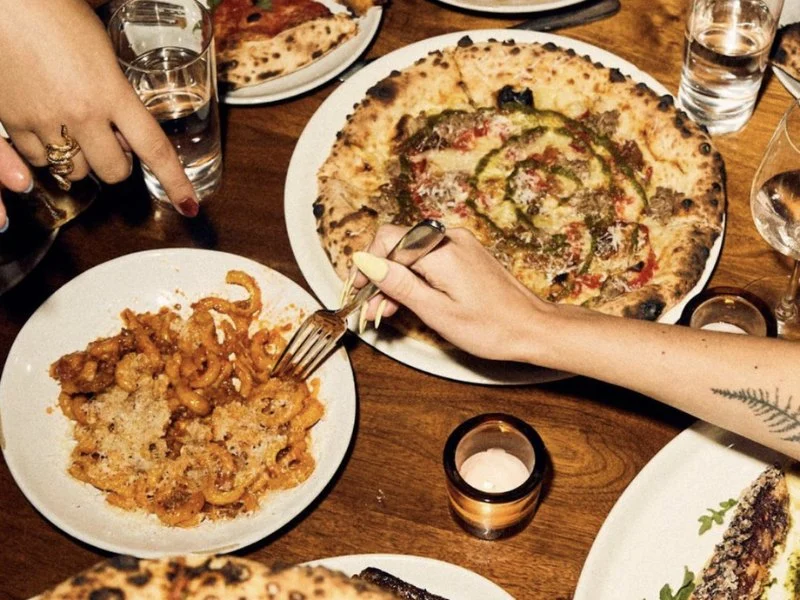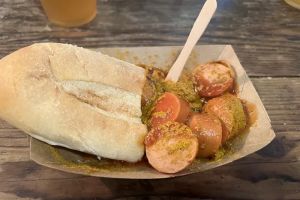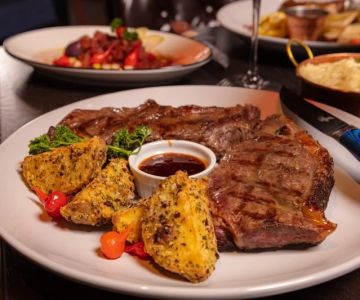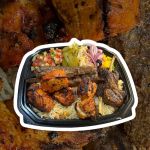
1. The Importance of Restaurant Reviews in the Dining Experience
Choosing a great restaurant can be a challenge, especially when there are so many options available. Restaurant reviews provide valuable insights that help diners make informed decisions. Whether you're planning a casual brunch or a fine dining experience, reading restaurant reviews can guide you toward the best spots in town. In this ultimate guide, we'll explore how to effectively use restaurant reviews, what to look for, and why they are essential for your dining decisions.
1.1. Why Trust Restaurant Reviews?
In today’s digital age, restaurant reviews are easily accessible through platforms like Yelp, Google, and specialized food blogs. These reviews offer honest feedback from real customers, providing a snapshot of the restaurant's atmosphere, service quality, menu options, and overall dining experience. By reading these reviews, you can gauge whether a restaurant matches your preferences and avoid unpleasant surprises.
1.2. The Impact of Restaurant Reviews on Your Experience
Restaurant reviews not only influence the choices of potential customers but also play a role in shaping the restaurant’s reputation. Positive reviews can drive new customers in, while negative ones may prompt restaurant owners to make changes. For diners, reviews act as a filter, helping to sort out the best dining experiences from mediocre ones. Therefore, understanding how to evaluate restaurant reviews is essential for getting the most out of your dining choices.
2. How to Read and Use Restaurant Reviews Effectively
Not all reviews are created equal. To get the most out of reading restaurant reviews, you need to know what to look for and how to assess the feedback you encounter. Here’s a breakdown of how to read and use restaurant reviews effectively:
2.1. Focus on Consistent Themes
When reading reviews, focus on recurring themes. Are multiple people commenting on the same strengths and weaknesses? For instance, if several reviews mention slow service or great food quality, you can consider these comments as more reliable. Individual reviews can vary, but consistent feedback across multiple sources gives you a clearer picture of what to expect.
2.2. Look for Detailed Descriptions
Specific details in reviews are more helpful than vague generalizations. For example, a review that describes the taste, presentation, and texture of specific dishes provides you with a more accurate expectation than a simple "good food" comment. Similarly, detailed reviews about the ambiance, cleanliness, or wait times can help you decide whether the experience is worth your time.
2.3. Pay Attention to the Reviewer’s Profile
Not all reviews carry the same weight. It's helpful to pay attention to the reviewer’s profile and their previous contributions. A reviewer who frequently posts and provides in-depth reviews may have a more reliable perspective than someone who writes a single vague review. Look for reviewers with a history of sharing thoughtful and honest feedback.
3. Top Restaurant Review Sites and Platforms
Restaurant reviews can be found on various platforms, each offering unique features and user experiences. Here are some of the top sites and apps that you can use to find quality restaurant reviews:
3.1. Yelp
Yelp is one of the most popular platforms for reading restaurant reviews. It offers user-generated reviews along with photos and ratings that help you make a more informed decision. Yelp also allows you to filter results based on price range, cuisine, location, and rating, making it easier to find exactly what you're looking for.
3.2. Google Reviews
Google Reviews are another useful resource for restaurant reviews. By simply searching for a restaurant on Google, you can access user ratings, reviews, and photos. Google also aggregates reviews from various platforms, giving you a broad overview of the restaurant’s reputation.
3.3. Zomato
Zomato (formerly known as Urbanspoon) provides detailed restaurant reviews, menus, and photos. It also allows users to filter restaurants by cuisine, location, and rating, similar to Yelp. Zomato’s review system tends to focus more on food quality and service, which makes it a reliable resource for food lovers.
3.4. OpenTable
OpenTable is well-known for making restaurant reservations, but it also provides reviews from diners who have booked through the platform. These reviews are often more focused on the dining experience, such as service quality, ambiance, and special dietary accommodations. OpenTable is a great resource for finding fine dining restaurants or upscale eateries.
4. What Makes a Restaurant Review Trustworthy?
With so many restaurant reviews available, it's important to determine which ones are trustworthy. Here are some factors that contribute to a reliable review:
4.1. Balanced Feedback
Trustworthy reviews tend to offer a balanced perspective, highlighting both positives and negatives. A one-sided review that only praises or criticizes the restaurant may lack objectivity. Look for reviews that offer detailed observations about the experience, rather than simply listing complaints or compliments.
4.2. Relevant Context
Reviews that provide context about the dining experience are often more helpful. For example, a review that mentions the time of day, crowd size, or special events happening during the meal gives you a better understanding of what factors could have influenced the experience. Context helps you determine if your visit would likely align with the reviewer’s experience.
4.3. Consistency Across Multiple Sources
To ensure the reliability of a review, check for consistency across different platforms and reviewers. If a restaurant consistently receives positive reviews about its food, service, and ambiance, it’s likely that the restaurant is living up to expectations. A mix of reviews, both positive and negative, can offer a more realistic and balanced view of the restaurant.
5. How to Write Your Own Restaurant Review
If you've had a fantastic (or less-than-ideal) dining experience, consider writing a restaurant review to help others make informed choices. Writing a helpful review involves more than just rating your meal. Here’s how to write a detailed and useful restaurant review:
5.1. Be Specific About Your Experience
When writing your review, include details about what you ordered, how the food tasted, and the quality of the service. Specific details about the atmosphere, noise level, and wait times can also add valuable context for future diners.
5.2. Keep It Honest and Objective
Honesty is key when writing a review. While it’s important to share your personal experience, try to remain objective by considering different aspects of the dining experience. If something went wrong, explain it without being overly harsh, and offer suggestions for improvement if possible.
5.3. Provide Constructive Criticism
If you had a negative experience, provide constructive criticism that could help the restaurant improve. Point out areas for improvement while remaining respectful and objective. This type of feedback is more likely to be appreciated by the restaurant and other diners.
6. How Brunch & Snack Chat Can Help You Find the Best Restaurant Reviews
At Brunch & Snack Chat, we provide expert insights and reviews on the best restaurants, from casual eateries to fine dining. Whether you’re looking for the best brunch spots, a hidden gem for dinner, or a quick snack, we offer detailed reviews to help guide your dining decisions. Visit us today to discover the top restaurant reviews and make your next meal an unforgettable experience.









 Golden Wok3.0 (200 reviews)
Golden Wok3.0 (200 reviews) Wave's Bar & Kitchen4.0 (139 reviews)
Wave's Bar & Kitchen4.0 (139 reviews) Taqueria Tacambaro (Food Truck)4.0 (41 reviews)
Taqueria Tacambaro (Food Truck)4.0 (41 reviews) Azal Restaurant & Hall4.0 (275 reviews)
Azal Restaurant & Hall4.0 (275 reviews) Black Burger4.0 (1086 reviews)
Black Burger4.0 (1086 reviews) SAGA4.0 (435 reviews)
SAGA4.0 (435 reviews) Seafood Places: Tips, Trends, and Secrets
Seafood Places: Tips, Trends, and Secrets Your Ultimate Guide to Burgers and Fries: Perfect Pairing and Recipes
Your Ultimate Guide to Burgers and Fries: Perfect Pairing and Recipes Why Budget Eats That Will Change Your Life
Why Budget Eats That Will Change Your Life Your Ultimate Guide to Snack Ideas: Healthy, Sweet, and Savory Snacks
Your Ultimate Guide to Snack Ideas: Healthy, Sweet, and Savory Snacks Your Ultimate Guide to Hidden Gem Restaurants | Brunch & Snack Chat
Your Ultimate Guide to Hidden Gem Restaurants | Brunch & Snack Chat Vegan Restaurants Every Food Lover Should Know: Top Picks for Plant-Based Dining
Vegan Restaurants Every Food Lover Should Know: Top Picks for Plant-Based Dining